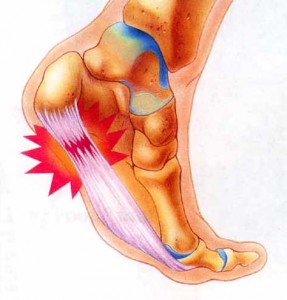Plantar Fasciitis Braces in Tong Kai Tseng HKSAR
Podiatrists for Plantar Fasciitis Treatment in Tong Kai Tseng HKSAR, China

Achilles Tendon Injury Or Rupture. Achilles tendon bursitis is inflammation of the fluid-filled sac (bursa) situated either between the skin of the back of the heel and the Achilles tendon (posterior Achilles tendon bursitis) or in front of the attachment of the Achilles tendon to the heel bone (anterior Achilles tendon bursitis, retrocalcaneal bursitis). Initially, the patient with Achilles tendonitis will be asked to modify their activities to decrease their running and jumping activities and do alternative physical activities, such as swimming, which do not put as much tension on the Achilles tendon. The discomfort from Achilles tendonitis is typically so serious that running is difficult as well as strolling is uneasy. Achilles tendonitis is normally an overuse injury brought on by doing too much too soon. Even in mild cases, it can take weeks to months of rest for the tendon to repair itself. More chronic injuries might respond much better to heat treatment with a rigorous 12 week heel drop workout program which has actually been shown to be efficient. Once you are able to do the heel drops without any discomfort, gradually include weight using a backpack. Achilles tendonitis generally reacts effectively to conservative treatment as long as it is diagnosed and treated early. To me pressure hurt it as well as it looked as though a bone had swollen not a tendon due to the fact that the swelling was hard. Achilles tendonitis tends to happen more frequently in older athletes than in younger athletes. However, Achilles tendonitis can also occur in teenagers who are extremely active in running and jumping sports. These treatments are a little bit more pricey or time consuming and are only suggested for if you deal with persistent Achilles discomfort or the conservative treatments are not working for you. If the professional athlete over pronates when running then this can cause the foot to flatten which in turn triggers the lower leg to turn inwards which twists the achilles tendon increase the tensions on it making it more prone for over use. For persistent cases where tendinosis is evident and other techniques of treatment have actually failed, surgery may be recommended to eliminate and repair the harmed tissue. The Hakan Alfredson's heel drop protocol workouts have been shown to be reliable in up to 90 % of patients suffering with achilles tendon pain and include the patient dropping the heel to horizontal in a slow and controlled manner. A worn out shoe or one that does not provide adequate support can enhance the stress on the achilles tendon. Attempt heel-cord workouts to increase your strength and versatility if your heel or heel cord (Achilles tendon) is uncomfortable and tight. Remain in good condition year-round and aim to keep your muscles as strong as they can be. Strong, flexible muscles work more efficiently and put less stress on your tendon. Longer term chronic Achilles tendon injuries may react much better to application of heat, once again requested 10 minutes every number of hours as needed. Mild calf stretching exercises can help stretch the muscles and aid recuperation.
Heel Pain Doctors and Surgery in Hong Kong
Previous Plantar Fasciitis Brace Next Plantar Fasciitis Brace Supplier
Plantar Fasciitis Braces Around Hong Kong
Plantar Fasciitis Braces in Nam Chung Cheung Uk HKSAR
Plantar Fasciitis Braces in Pan Long Wan HKSAR
Plantar Fasciitis Braces in Sheung Yeung HKSAR
Plantar Fasciitis Braces in Han Hui HKSAR
Plantar Fasciitis Braces in Luk Keng Chan Uk HKSAR
Plantar Fasciitis Braces in Kam Tsin HKSAR